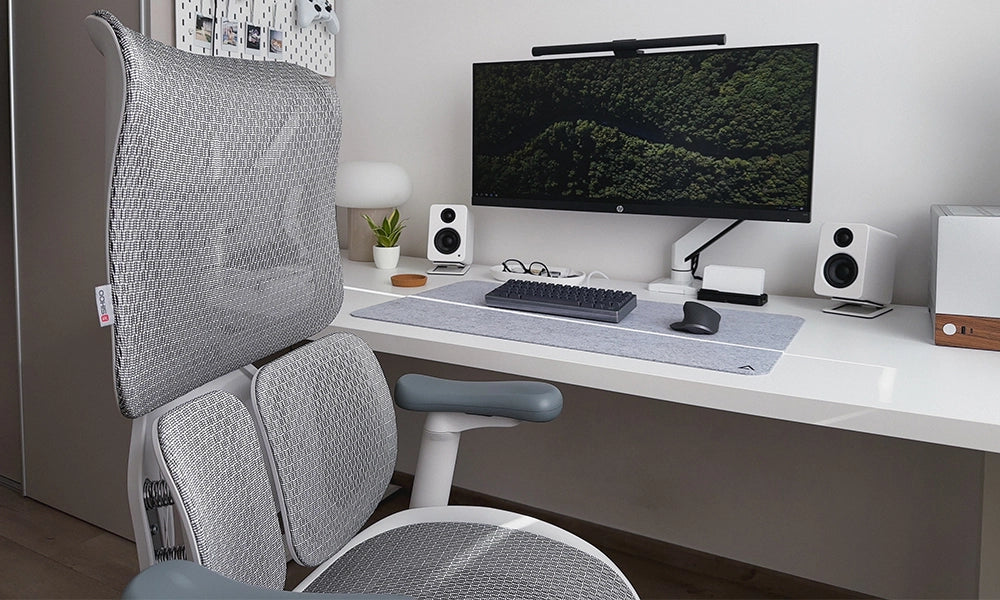In the modern workplace, where hours are spent in front of computer screens, the ergonomic office chair has become a crucial tool for maintaining comfort and productivity. These chairs are designed to support the spine, promote good posture, and reduce the risk of musculoskeletal disorders. However, like any piece of furniture, ergonomic chairs have a lifespan and require periodic evaluation for replacement. In this blog post, we will explore the signs that indicate it's time to replace your ergonomic office chair, the benefits of doing so, and how to choose a new chair that meets your needs.
Signs It's Time for a Replacement
- Visible Wear and Tear: The most obvious sign that your ergonomic chair needs replacing is visible wear and tear. This includes worn-out cushions, cracked or peeling upholstery, or broken parts such as armrests or casters. These issues not only affect the chair's aesthetics but also compromise its functionality and comfort.
- Loss of Support: Over time, the foam and padding in the seat and backrest of your chair can lose their resilience. This results in reduced support for your back and buttocks, leading to discomfort and potential posture problems. If you find yourself sinking into the chair or feeling pressure points where there shouldn't be any, it's a clear indication that the chair's support has diminished.
- Mechanical Issues: Ergonomic chairs are equipped with mechanisms that allow for adjustments in seat height, tilt, and lumbar support. Mechanical failures such as inability to hold position, difficulty adjusting, or squeaky noises indicate that the internal mechanisms may be failing. These issues not only affect comfort but can also compromise safety.
- Persistent Discomfort: One of the primary reasons for investing in an ergonomic chair is to alleviate discomfort associated with prolonged sitting. If you consistently experience back pain, neck stiffness, or numbness in your legs despite adjustments, it may be a sign that your current chair no longer provides adequate support or alignment.
- Changes in Your Body or Work Habits: Personal circumstances change over time. If you've gained or lost weight, experienced an injury, or changed your workstation setup, your ergonomic chair may no longer be suitable. It's essential to reassess your chair's fit and adjustability to accommodate these changes.
Benefits of Replacing Your Ergonomic Chair
- Improved Comfort and Productivity: A new ergonomic chair that properly supports your body can significantly enhance comfort during long work hours. This, in turn, boosts productivity by reducing distractions caused by discomfort or pain.
- Health and Well-being: Proper ergonomic support promotes better posture, reduces the risk of musculoskeletal disorders, and alleviates strain on the spine and joints. Investing in a new chair can contribute to your long-term health and well-being.
- Long-term Cost Savings: While the initial cost of a quality ergonomic chair may seem high, it can be a cost-effective investment in the long run. Preventing health problems associated with poor posture and discomfort can reduce healthcare expenses and improve overall quality of life.
- Enhanced Aesthetics and Professionalism: A new chair not only improves comfort but also enhances the aesthetics of your workspace. A well-maintained and stylish ergonomic chair reflects professionalism and attention to detail.
Choosing Your New Ergonomic Chair
When selecting a new ergonomic chair, consider the following factors:
- Adjustability: Look for chairs that offer a wide range of adjustments, including seat height, seat depth, lumbar support, armrest height, and tilt tension. This ensures that you can customize the chair to fit your unique body dimensions and preferences.
- Support and Comfort: Opt for chairs with high-quality foam padding and breathable upholstery materials. The backrest should provide adequate lumbar support to maintain the natural curve of your spine.
- Durability: Check customer reviews and warranty information to ensure that the chair is built to last. A durable chair will withstand daily use and retain its ergonomic features over time.
- Budget: Set a realistic budget based on the features and quality you require. Remember that investing in a reputable brand or higher-end model may offer better long-term value.
- Ergonomic Certification: Look for chairs that have been tested and certified by ergonomic organizations or standards bodies. This ensures that the chair meets ergonomic guidelines and promotes healthy sitting habits.
Conclusion
Your ergonomic office chair plays a crucial role in your daily comfort, productivity, and long-term health. Knowing when to replace your chair and selecting a suitable replacement are essential steps toward maintaining a supportive and ergonomic workspace. By paying attention to signs of wear and tear, evaluating comfort and support levels, and considering your specific needs, you can make an informed decision that enhances your overall work experience. Remember, investing in your well-being through a quality ergonomic chair is an investment in yourself and your future productivity.






Dejar un comentario
Este sitio está protegido por hCaptcha y se aplican la Política de privacidad de hCaptcha y los Términos del servicio.